Join More Than 50,000+ Subscribers and get latest camera news and rumors
NEW CAMERA VIDEOS ON YOUTUBE
|
By admin, on June 11th, 2025
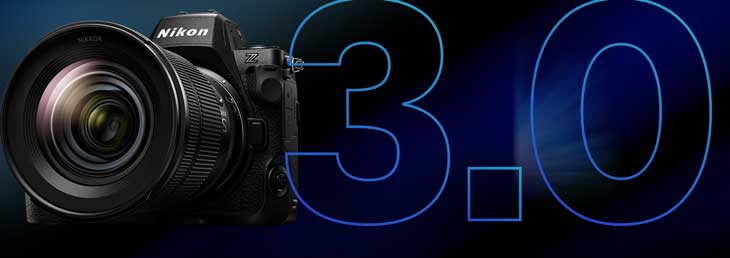
Nikon issued a major firmware update to the Nikon Z8 Camera, firmware 3.0, a free update packed with powerful new features and performance enhancements for our compact pro model. Designed to help you get even more out of your Z8, this update brings major upgrades across photography, video, and workflow.
1. World First – Pixel Shift + Focus Shift Technology now in Nikon Z8
The Z8 is now the world’s first camera to combine pixel shift with focus shift or pixel shift with auto exposure bracketing into your workflow. This unlocks both greater depth of field and resolution, perfect for commercial, fine art, and architectural photography. Using Nikon’s NX Studio software, you can merge pixel shift clusters. Then stack focus layers using your preferred software to create images with clarity and resolution up to 180 megapixels. Pixel shift also reduces moray, improves color accuracy, and lowers noise, giving you cleaner, more detailed results. With pixel shift and AE bracketing, the Z8 creates a pixel shift cluster at every exposure bracket, which you can then merge for high resolution and enhanced dynamic range.
2. Enhanced Autofocus: Precision and Speed
Autofocus gets a boost, too. Expanded custom wide area AF options can now be set completely at the edge of the frame and with smaller increments for more precise design of your AF point. To help you nail focus, there’s now a onetouch 400% magnification option, plus a builtin focus limiter that lets you define near and far focus ranges, speeding up autofocus and helping the camera lock on more efficiently.
3. Creative Control: Flexible Color Picture Profiles
Firmware 3.0 puts your creative intent front and center with new compatibility with flexible color picture controls. Import NP3 files created in NX Studio. Load them onto your Z8 and shoot with your custom looks applied in real time, capturing your vision exactly as you see it. For filmmakers shooting in an log, a more accurate view assist now displays enhanced highlights and contrast that more closely resembles our new Rec 709 L.
4. Workflow Upgrades: Voice Memos and Networking
For photojournalists, you can now record voice memos using an external mic for clear audio annotations even on the move. This update also makes the Z8 fully compatible with Nikon’s powerful advanced networking solution, NX Field. With NX Field, you can trigger and control up to 10 remote cameras via LAN. Adjust nearly every setting remotely and send files directly to an FTP server. Ideal for sports, news, and event coverage.
5. Download Nikon Z8 Firmware 3.0 Now
These updates redefine what’s possible with the Z8, whether you’re in the studio or out in the field. Download firmware 3.0 soon on Nikon’s website or through the Snapbridge app and start exploring what’s new.
Click here to explore more about Nikon Z8 3.0
Get you Nikon Z8 From Here – online B&H Store | Adorama | Amazon.com |
See more Nikon Z8 Comparison – – Panasonic S1R II vs Nikon Z8 | Nikon Z8 vs Leica SL3-S
Nikon added Shutter angle and Waveform Monitor in Nikon Z6 III and Nikon Z8
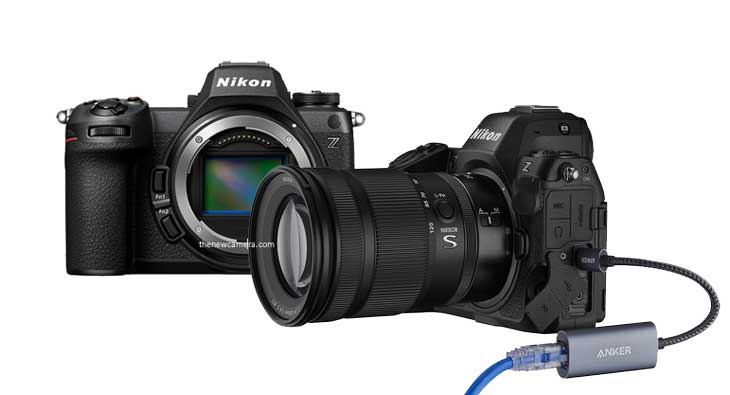
By admin, on February 27th, 2025

Due to the growing pressure of Panasonic’s recent camera announcement, models like S5, S5IIX, and S1R II intensifying the market competition with built-in professional video graphics features like an anamorphic de-squeeze setter, angle waveform, and a lot of features that professionals in videography would love to have in their cameras. But again, they also have some limitations, like the first generation of hybrid autofocus system, which is not as good as the other brands. But, the recent set of feature upgrades announced by Nikon for the Nikon Z6 III and Z8, give us a clear hint that Nikon is consdering Lumix as their main competitor, and upscaling their camera features o match or surpass Panasonic’s advanced videography capabilities, catering to both professional filmmakers and hybrid shooters.
Nikon’s Interest in Cinematography
We all know that Nikon is now more interested in cinematography since it acquired the RED camera division. It is a bit more serious about filmmaking and enhancing videography for cinematographic features in its consumer professional mirrorless cameras.
Nikon’s Recent Firmware Update
In addition to that, in a recent firmware update, Nikon has updated the N-Log of the Z6III, reducing noise in the dark areas of N-Log videos. They have mentioned this in the recent update, so it’s a kind of major update that UPSCALES the N-Log video recording of the Z6III camera.
Shutter Angle and New Features in Nikon Z6III & Z8
Apart from this major update, 15 steps of shutter angle from 5.6 degrees to 360 degrees have been added in the Z6III and Nikon Z8 cameras.
Apart from these two major updates, a lot of various custom control settings have been added, like selecting the color of the zebra pattern that includes black, grey, red, green, blue, etc. A waveform monitor—which was not available in the previous generation of their cameras—has also been added.
At the same time, high-resolution lossless zoom has also been added. If you are creating your videos and experimenting with your FX camera, then the digital high-resolution lossless zoom feature is available to you.
Download the latest Nikon Z6 III firmware update
Download the latest Nikon Z8 Firmware update
Follow us on our social pages FACEBOOK | TWITTER | INSTAGRAM to get live Camera News + Nikon Rumors 24X7
By admin, on February 26th, 2025
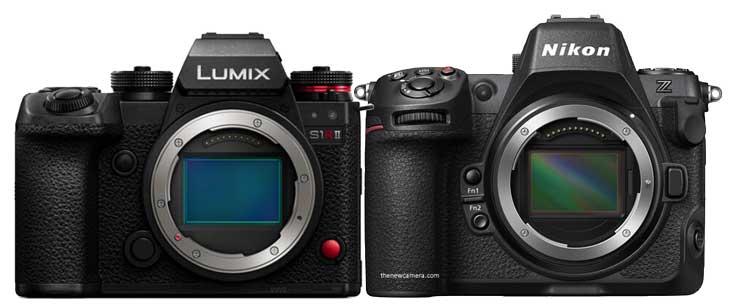
Panasonic S1R Mark II – Best for Landscape & Fine Art Photography
Let’s directly jump to the recommendations. Panasonic S1R Mark II camera is recommended for landscape and fine art shooters, and its specifications in indoor architecture suit well. The big reason is the higher resolution sensor and the ability to record higher resolution handheld modes, allowing you to generate 150+ megapixel images in a single handheld shot.
Buy and help us to visit the barista again Nikon Z8 B&H Store
Professional Cinematography & Open-Gate Recording
Now, the big thing is that if you are a professional cinematographer or videographer, then the Panasonic S1R Mark II camera may fit your needs more perfectly since, for professionals, we do have an option to record videos in open-gate format. Right now, with the basic settings, you are getting open-gate at 5.8K, but soon after a series of firmware updates, open-gate recording will become available up to 8K 30fps.
Why Panasonic S1R Mark II for Professional Cinematographers?
So why are we recommending the Panasonic S1R Mark II camera for professional cinematographers? Since we are getting wavefront functionality, we are also getting anamorphic lens recording support, so you can de-squeeze your footages in-camera, as well as options like false color, which helps you judge the level of accuracy in color tones while shooting.
Another important feature is the shutter angle, and the list doesn’t end here. You also get an option to directly record your videos on an SSD drive, so there’s no big issue regarding memory cards—you can simply replace your SSD when it’s full.
Panasonic S1R Mark II – Autofocus System & Its Limitations
The hybrid autofocus system is still in its development stage. The autofocus is reliable but requires expertise to handle the Panasonic AF system correctly. Otherwise, even people operating cameras for more than three years may struggle with it. The reason is very simple: it’s not a turn-and-go AF system.
So, when we talk about the best hybrid autofocus system between these two cameras, without a doubt, the Nikon Z8 is the best. We are not saying that the S1R Mark II is not usable—it is usable—but the precision, fastness, and readout speed due to the presence of stacked sensors, refresh rate, and subject detection, most of which are directly inherited from the Nikon Z9, make the Nikon Z8 a perfect camera for sports and wildlife photography.
Also, keep in mind that the autofocus tracking of the Panasonic S1R Mark II camera remains limited to 10 frames per second. So that’s the limit you get with the S1R Mark II, whereas there is no such limit in the Nikon Z8. The eye-tracking remains active even at 120 frames per second, and it works exceptionally well while using 30fps and 40fps modes of the Z8 at full resolution. The eye-tracking AF and exposure remain fully active.
Another thing to consider: The lens ecosystem
Now, you have to understand the lens ecosystem. The Z mount has been opened up, and we have a range of lens options available inside the Nikon system. That doesn’t mean the L-mount is lacking—L-mount also has a huge range of lenses—but Tamron is still not a part of the L-mount system. If you are a wedding photographer looking for a budget high-quality constant aperture lens, Nikon has options like the Tamron 28-75mm G2 lens for the Z8. At this price point, no equivalent L-mount lenses are available for the S1R Mark II. You have to pay extra to get an f/2.8 constant aperture zoom lens in the L-mount system.
So, should a wedding photographer buy the Panasonic S1R Mark II or the Nikon Z8?
If you are inclined toward the Panasonic S1R Mark II camera, you can buy it—it’s a good-to-go camera. But if we compare all the features offered by both cameras, the Nikon Z8 looks a bit more suitable with its faster stacked CMOS sensor, highly responsive hybrid autofocus system, and the huge range of Z-mount lenses available, especially budget-friendly high-quality lenses like the Tamron 28-75mm f/2.8 G2. All these factors make the Nikon Z8 a more feasible and recommendable camera for wedding photographers.
Autofocus Tracking & Frame Rate Comparison
- Panasonic S1R Mark II is limited to 10fps AF tracking.
- Nikon Z8 has no such limit—eye-tracking remains active even at 120fps.
- Works exceptionally well at 30fps and 40fps while maintaining full eye-tracking AF and exposure.
Lens Ecosystem – Nikon Z8 vs. Panasonic S1R Mark II
Now, you have to understand the lens ecosystem:
- Z mount is open—a wide range of lens options available inside Nikon’s system.
- L-mount also has a huge range of lenses, but Tamron is still not part of the L-mount system.
- Wedding photographers looking for budget high-quality f/2.8 lenses have Tamron 28-75mm G2 for the Nikon Z8.
- No equivalent budget-friendly f/2.8 zoom lens for L-mount—you have to pay extra for a constant aperture zoom lens.
A little more about the Nikon Z8 camera
The Nikon Z8 features a stacked CMOS sensor directly inherited from the Nikon Z9. Even the autofocus algorithm and image processor are exactly the same, making it essentially a flagship camera inside a compact Z8 body.
If you are interested in wildlife and sports photography and want rolling shutter-free images, the Nikon Z8 stands out despite the fact that many photographers still use conventional sensors. If you plan to shoot at higher frame rates with the Panasonic S1R Mark II at 30 or 40 frames per second, it’s a well-known fact that Panasonic struggles to track subjects continuously at high frame rates.
At the same time, the Nikon Z8’s sensor image stabilization system works at the pixel level with the help of AI advancements. If you consider all these factors, then the Nikon Z8 is without a doubt recommended for photographers looking for a perfect hybrid camera—especially those interested in wildlife and sports photography.
Final Verdict: Panasonic S1R Mark II vs. Nikon Z8
Who Should Buy the Panasonic S1R Mark II?
✅ Best for Landscape & Fine Art Photography – The high-resolution sensor and 150+ megapixel handheld mode make it ideal for professionals focused on fine details and large-format prints.
✅ Great for Cinematographers & Videographers – Open-gate recording (5.8K, up to 8K with updates), anamorphic lens support, false color monitoring, and SSD recording support make it a solid choice for high-end video production.
❌ Not the Best for Fast-Paced Shooting – The autofocus system is still in development, requiring expertise to operate correctly, and AF tracking is limited to 10 fps, making it less suitable for sports and wildlife photography.
❌ Limited Lens Ecosystem & Expensive Lenses – While L-mount has a good selection of lenses, Tamron, Viltrox, and many new third-party lens makers are not part of the system or have very few lenses for L Mount, making affordable fast lenses harder to find.
Who Should Buy the Nikon Z8?
✅ Best for Sports & Wildlife Photography – Stacked CMOS sensor (inherited from the Z9) enables fast readout, high-speed shooting, and advanced subject tracking. AF tracking remains active up to 120 fps, making it superior for action shots.
✅ Stronger Hybrid Autofocus System – Fast, precise, and reliable autofocus, with advanced AI-driven subject detection and Z9-level AF algorithms, makes it easier to use and more responsive.
✅ Expansive & Budget-Friendly Lens Ecosystem – The Z-mount system has a wide range of native lenses, including affordable high-quality options like the Tamron 28-75mm f/2.8 G2.
✅ Great for Hybrid Shooters (Photo & Video) – While it lacks open-gate recording, the stacked sensor, superior autofocus, and high-speed burst shooting make it a more versatile camera for both photo and video work.
Final Recommendation
- If you are a landscape, fine art, or professional cinematographer, the Panasonic S1R Mark II is a strong contender due to its high-resolution capabilities and pro-video features.
- If you shoot sports, wildlife, weddings, or need the best hybrid performance, the Nikon Z8 is the clear winner, thanks to its superior autofocus, faster shooting speeds, and larger lens ecosystem.
For most photographers and hybrid shooters, the Nikon Z8 offers a more balanced and versatile package. However, if high-resolution stills or advanced video tools like open-gate recording are your priority, the Panasonic S1R Mark II is the better choice.
Get the Panasonic S1R Mark II Camera from Adorama.com | B&H Store | Amazon.com
Panasonic S1R II vs Nikon Z8 – Specification comparison table
| Category |
Panasonice Lumix S1R II |
Nikon Z8 |
| – Sensor Type |
Full-frame BSI CMOS |
Full-frame stacked CMOS |
| – Resolution |
44.3 MP |
45.7 MP |
| – ISO Range |
40-102400 |
64-25600 (expandable to 32-102400) |
| – Color Depth |
14-bit |
14-bit |
| Autofocus System |
|
|
| – Type |
Phase + Contrast detection with DFD, AI-based |
493-point phase-detect AF / Faster AF Refresh rate due to the stacked sensor |
| – AF Points |
Not specified, but improved over previous models |
493 points (covers 90% of frame) |
| – Speed and Accuracy |
Fast, with AI tracking for subjects |
Fast and accurate, -7EV to EV19 sensitivity, -9EV with starlight view |
| – Subject Tracking |
AI-based for faces, eyes, animals |
Specific modes for birds, animals, vehicles, etc. |
| Video Capabilities |
|
|
| – Max Resolution and Frame Rates |
8K at 30fps, 4K at 120fps |
8K at 60fps (N-RAW), 4K at 120fps |
| Open Gate Recording |
5.8k Opengate (8K soon to be available via Firmware) |
None |
| – Formats |
H.265 10-bit 4:2:0 for 8K, ProRes 422 for lower resolutions |
N-RAW, ProRes RAW, H.265, H.264, 10-bit color |
| – Stabilization |
In-body image stabilization 8 Stops |
Pixel Level Accuracy – AI IBIS with Full sensor 8 Stops IBIS rating |
| Shutter angle |
Yes |
Yes |
| False Color |
yes |
No |
| – Audio |
Built-in stereo mic, external mic jack |
Built-in stereo mic, microphone, and headphone jacks |
| Waveform |
Yes |
Yes |
| Recording to SSD |
Yes |
No |
| Anamorphic |
Yes, it Supports Desqueez in the camera |
No |
| Shooting Speed and Performance |
|
|
| – Continuous Shooting Speed |
Up to 40 fps, but Active tracking works up to 10 fps |
Up to 120 fps (with crop), 30 fps full-res | 30 Fps full tracking |
| – Buffer Capacity |
Large, can shoot extended bursts |
Large, can handle extended bursts |
| – Shutter Speed Range |
1/8000 to 60s (assumed, typical for mirrorless) |
1/32000 to 900s (electronic), 1/8000 to 30s (mechanical) |
| Display and Viewfinder |
|
|
| – Viewfinder |
OLED EVF, 5.69m dots (assumed, similar to S5 II) |
3.69m-dot OLED EVF |
| – LCD Screen |
3.2-inch, 2.1m dots, articulated (assumed, similar to original S1R) |
3.2-inch tilting touchscreen, 2.36m dots |
| – Touchscreen |
Yes |
Yes |
| Connectivity and Wireless Features |
Wi-Fi, Bluetooth, smartphone app |
Wi-Fi, Bluetooth, Nikon SnapBridge app |
| Battery Life and Power |
|
|
| – Battery Type |
BLK-22 (same as S5 II) |
EN-EL15c |
| – Life |
~370 shots (assumed, similar to S5 II) |
~300-400 shots |
| – External Power |
USB-C |
USB-C |
| Physical Design and Ergonomic Features |
|
|
| – Size |
Smaller and lighter than the original S1R (over 200g lighter) |
Smaller than Z9, comparable to D850 |
| – Weight |
~800g |
910g |
| – Weather Sealing |
Yes |
Yes |
| – Ergonomic Features |
Classic DSLR-style shape, various dials and buttons |
Nikon-style layout, various controls |
| Lens Mount and Compatibility |
|
|
| – Mount |
Leica L-mount |
Nikon Z-mount |
| – Available Lenses |
Wide range from Leica, Sigma, etc. |
Wide selection of Nikon Z lenses |
Which One to Choose?
- For landscape, fine art, and professional cinematographers → Panasonic S1R Mark II (due to high-resolution mode & video tools).
- For sports, wildlife, and hybrid photography → Nikon Z8 (due to superior AF, stacked sensor, and high-speed tracking).
- For wedding photographers → Nikon Z8 (better autofocus, lens options, and hybrid usability).
UPDATE Feb 27 – Nikon added Shutter angle and Waveform Monitor in Nikon Z6 III and Nikon Z8
By admin, on January 18th, 2025
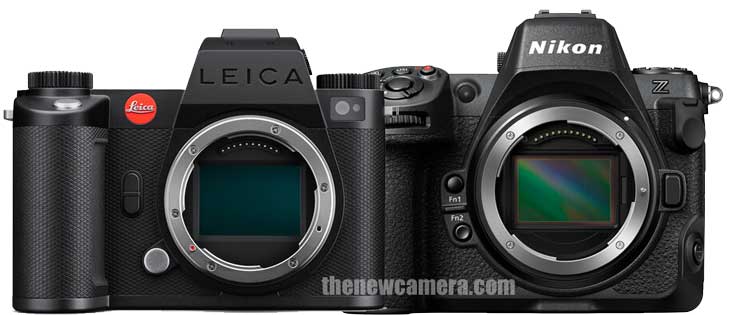
Nikon Z8 versus Leica SL-3 S: Which is the Best Camera Among These Two? If you are planning to buy the Leica SL3 S camera, you must first look at the Z8 core specification comparison table before making a decision.
Design Comparison
| Feature |
Nikon Z8 |
Leica SL3-S |
| Lens Mount |
Nikon Z |
L-Mount |
| Build Material |
Magnesium Alloy |
Aluminum, Magnesium Alloy |
| Dimensions (W x H x D) |
5.7 x 4.7 x 3.3″ (144 x 118.5 x 83 mm) |
Not Specified |
| Weight |
2.0 lb (910 g, with battery and recording media) |
4.715625 lb / 2139 g (With Battery)
1.7 lb / 768 g (Body Only) |
| Display Type |
3.2″ 4-Axis Tilting Touchscreen LCD, 2,100,000 dots |
3.2″ Tilting Touchscreen LCD, 2,332,800 dots |
| Viewfinder Type |
0.5″ OLED, 3,690,000 dots, Approx. 0.8x Magnification |
OLED, 5,760,000 dots, Approx. 0.76x Magnification |
| Eye Point |
23 mm |
21 mm |
| Weather Sealing |
Yes |
Yes |
| Wireless Connectivity |
Wi-Fi 5 (2.4 / 5 GHz), Bluetooth 5.0 |
2.4 GHz MIMO Wi-Fi, Bluetooth 5.0 |
| Dual Card Slots |
CFexpress Type B / XQD + SD (UHS-II) |
1x CFexpress Type B, 1x SD (UHS-II) |
| GPS |
Yes (via smartphone) |
Yes (via smartphone) |
Which camera is better for longer hours of work, like weddings and events lasting hours, the Leica SL3 S or Nikon Z8?
In the design comparison, it is visible that the Leica is built like a tank, heavier, but at the same time, the electronic viewfinder and the display part of the camera are of more premium quality. For more prolonged shooting, such as during weddings and events lasting over 7-8 hours or more, it’s recommended to hold a camera that makes you comfortable for longer hours of work, like the Nikon Z8.
Photography Comparison
| Feature |
Leica SL3-S |
Nikon Z8 |
| Sensor Resolution |
24.6 MP (Effective) |
45.7 MP (Effective) |
Sensor Tech
|
BSI CMOS |
STACKED BSI CMOS |
| Sensor Type |
Full-Frame |
Full-Frame |
| ISO Range |
100 to 200,000 (manual) |
64 to 25,600 (Extended: 32 to 102,400) |
| Continuous Shooting |
Up to 30 fps |
Up to 20 fps Raw, 30 fps JPEG Shooting |
Image Stabilization
|
Upto 5 – Stops (max) |
5.5 (Max 6 Stops with VR Lens) + AI IS |
| Autofocus Points |
779 Points (Phase + Contrast Detection) |
493 Points (Phase Detection Only) + AI AF tracking Modes |
| White Balance Options |
Auto, Cloudy, Color Temp, Daylight, Flash, Fluorescent, Manual |
Auto, Cloudy, Direct Sunlight, Flash, Fluorescent, Incandescent, Custom |
| Shutter Speed |
Mechanical: 1/8000 to 30 sec; Electronic: 1/16000 to 60 sec |
Electronic: 1/32000 to 30 sec; Bulb Mode Supported |
| Metering Modes |
Center-Weighted, Highlight Weighted, Multi-Zone, Spot |
Center-Weighted, Highlight Weighted, Matrix, Spot |
| Aspect Ratios |
3:2, 16:9, 17:9 |
1:1, 3:2, 16:9 |
| Image File Format |
DNG, JPEG |
JPEG, RAW |
| Bit Depth |
14-Bit |
14-Bit |
| Self-Timer |
2/5/10/20-Second Delay |
2/5/10/20-Second Delay |
| Built-In ND Filter |
No |
No |
| Capture Type |
Stills & Video |
Stills & Video |
In the comparison of photographic core specifications, the best part is the Nikon Z8 camera, which has a 45-megapixel BSI CMOS sensor. Along with that, the Nikon Z8 also features AI Autofocus modes that come directly from the Nikon Z9. The best part is that in continuous shooting mode, even at the full 45-megapixel resolution, you can capture 30 frames per second without any issues.
Detailed AF System Comparison
| Aspect |
Nikon Z8 |
Leica SL3-S |
Conclusion |
| Sensor Type |
Stacked CMOS, faster readout |
BSI CMOS (non-stacked), slower readout |
Slower AF in burst and video due to non-stacked sensor. |
| AF Points |
493, with 405 Auto-area, efficient algorithms |
779 PDAF, less optimized processing |
More points, but less effective due to inferior algorithms and processing. |
| Subject Detection |
Mature, hierarchical (e.g., eyes, body) |
Beta for animals, less precise |
Less reliable tracking, especially for complex subjects like wildlife. |
| Low Light AF |
Excellent, reliable in extreme low light |
Struggles in extreme low light |
Less versatile for low-light scenarios, limiting use cases. |
| Burst Shooting with AF |
20 fps, large buffer, sustained performance |
15 fps, buffer fills quickly |
Misses shots in fast action due to buffer limitations. |
Conclusion
The Nikon Z8’s AF system is superior to the Leica SL3-S’s due to its stacked sensor, advanced algorithms, mature subject detection, better low-light performance, and higher burst shooting capabilities. While the SL3-S has more AF points, its overall AF system is inferior because it lacks the speed, precision, and reliability of the Z8’s system. These differences make the Z8 a better choice for photographers prioritizing autofocus performance, especially in demanding conditions like sports, wildlife, and low-light photography.
Leica is more of a bit retro and classical type camera, and it is limited to a traditional 24-megapixel BSI CMOS sensor that we have seen in the Panasonic S5 II. Although the number of autofocus points is much lower compared to the Nikon Z8, it doesn’t feature any AI autofocus tracking hardware that we have in the Z8. But again, if you are a Leica user, then you may prefer having a Leica camera, as Leica’s color science is quite different from Nikon’s.
If you compare the core specifications, the Nikon Z8 is undoubtedly the clear winner in the competition.
Video Comparison
| Feature |
Leica SL3-S |
Nikon Z8 |
| Max Resolution |
UHD 6K (5888 x 3312) |
UHD 8K (8256 x 4644) |
| Frame Rates (Max) |
4K at 60 fps [Crop] |
4K at 120 fps [Crop] |
4k 60 FPS
|
Yes, Cropped |
Uncropped |
| Slow Motion |
No |
Yes |
| Video Formats |
H.264, H.265 (4:2:0/4:2:2 8/10-Bit), ProRes 4:2:2 |
ProRes RAW HQ, H.265 4:2:2, H.264 4:2:0 |
| Internal Recording |
10-Bit 4:2:2 |
ProRes RAW HQ 12-Bit |
| External Recording |
4:2:2 12-Bit via HDMI |
12-Bit via HDMI |
| Audio Formats |
AAC, LPCM |
24-Bit LPCM |
| Gamma Curves |
Rec709, Rec2020 |
HDR-HLG |
| Recording Limit |
No |
No |
| IP Streaming |
No |
No |
| Built-In Microphone |
Stereo |
Stereo |
| Autofocus Points (Video) |
779 Points |
493 Points + AI AF modes Active |
| Heat Dissipation |
Passive |
Passive |
| Maximum Bitrate |
600 Mbps |
Up to 5780 Mbps (8K ProRes RAW) |
Which camera is better for professional photography use, the Nikon Z8 or the Leica SL3 S?
It’s very clear from the beginning of the comparison table that the Nikon Z8 camera is able to capture 8K videos and offers 4K video recording up to 120 frames per second. So, technically, the Nikon Z8 is quite a bit more advanced. At the same time, the Z8 camera also offers the ability to record high-quality 12-bit internal RAW video. Due to its nature and the very angle display screen, you can also create content with the camera if you like to follow platforms like YouTube.
Does the Leica SL3 S camera offer better video features compared to the Nikon Z8?
The Leica SL3 S camera does have a limited set of videography specifications and features, such as a tilting display screen on the back. However, if you have specific videography needs, the Nikon Z8 is superior.
Which camera offers more value for the price, the Nikon Z8 or the Leica SL3 S?
Among the two, as per the set of core specifications, the Nikon Z8 looks very promising and is more advanced compared to the Leica SL3 S for the price you’re paying. But if you are a Leica enthusiast and would love to buy a Leica camera, then you can still go with the Leica SL3 S if you wish to.
Here you can purchase online B&H Store | Adorama | Amazon.com |
By admin, on February 9th, 2024
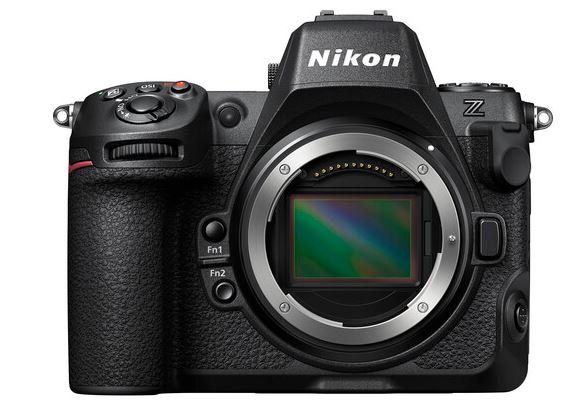
Nikon has released a new firmware update for the Z8 camera, which includes a total of 30 Big and small updates inside it, I am really surprised to see the vast amount of software-level updates sent to the camera for free of charge, other camera makers should learn from this. I think this is the largest number of updates we’ve seen to date from a camera maker. This truly transforms the Nikon Z8 into a new camera.
These are the Major Updates
- Improved autofocus options for still images and videos.
- Introduction of Pixel Shift shooting for higher-resolution images.
- Rich Tone control for enhanced skin details.
- Custom control assignments for personalized settings.
- Exit zoom with a half-press of the shutter-release button.
- Focus-point border width customization.
Download the update from here
Follow us on our social pages FACEBOOK | TWITTER | INSTAGRAM to get live news + Nikon Rumors 24X7
By admin, on June 30th, 2023
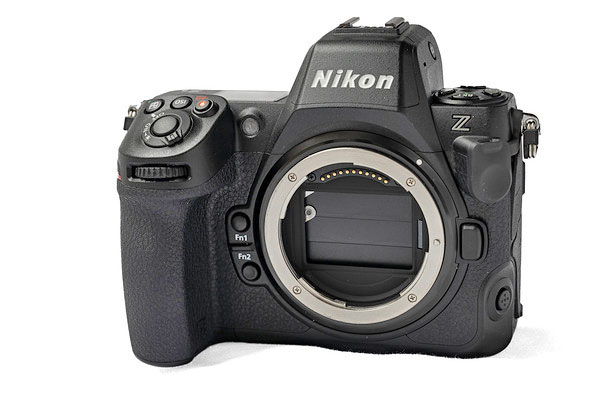
Nikon Z8 camera visited PhotonstoPhotos Labs, as we know the Nikon Z8 camera uses the same sensor we have seen in the Nikon Z9 camera. So the test score of both the camera looks almost like the camera.
| Maximum PDR |
Low light ISO |
Low-light EV |
| Z8 |
11.32 |
4224 |
10.40 |
| Z9 |
11.30 |
4144 |
10.37 |
| Z8DX |
10.61 |
1994 |
9.32 |
| Z50 |
10.53 |
2406 |
9.59 |
| Z7II |
11.60 |
4157 |
10.38 |
| α7R V |
11.70 |
5244 |
10.71 |
| α1 |
11.36 |
5215 |
10.70 |
| Canon EOS R5 |
11.85 |
5435 |
10.76 |
| S1R |
11.37 |
4522 |
10.50 |
| fpL |
11.39 |
8388 |
11.39 |
As you know Nikon Z8 is impressive and features almost the same core specification we have in Nikon Z9.
Nikon’s latest mirrorless camera is equipped with the same stacked 45-megapixel image sensor and EXPEED 7 processor as the Z9. It supports high-speed continuous shooting at 20fps RAW, despite the fact that it has almost the same core specs as the Nikon Z9.
The overall Dynamic Range Test results of the Sony A7R V, as well as Canon R5, are also very impressive.
Nikon Z8 at B&H Store
By admin, on June 24th, 2023

Nikon has announced that some customers using the mirrorless camera “ NIKON Z 8” have reported issues with attaching the lens. Nikon has identified the product number range of affected “Z 8” cameras and will repair them free of charge, regardless of the warranty period. Customers can check if their product is eligible by clicking “Confirm product number” and following the instructions. Nikon apologizes for the inconvenience caused to its customers.
Nikon Z8 Problems Press Release
Thank you for your continued patronage of Nikon products.
Customers using the mirrorless camera “Z 8” have pointed out that in rare cases the lens cannot be rotated to the locked position and the lens cannot be attached.
As a result of the investigation, it was found that this phenomenon may occur in “Z 8”. We have identified the product number range of the target “Z 8”, so we will inform you about the correspondence.
Regardless of the warranty period, we will repair the affected products free of charge. We will bear the return shipping fee. If you have any questions regarding this matter, please contact the service organization.
We sincerely apologize for the inconvenience caused to our customers.

How to check the target product
To check if your product is eligible, please click “Confirm product number” below and enter your “Z 8” product number according to the displayed instructions.
Depending on the result of matching the entered product number, if the product is applicable, the reception method will be displayed, so please check it. If it is not a target product, please feel free to use it.
Follow us on our social pages FACEBOOK | TWITTER | INSTAGRAM to get live news + Nikon Rumors 24X7
source NIKON USA
|
KEEP THIS BLOG ALIVE - Support New Camera Buy Canon Lenses, Buy Music CD or Digital Camera at amazon it helps this site, and you do not pay anything extra, it is just a way to help support this site.

|












